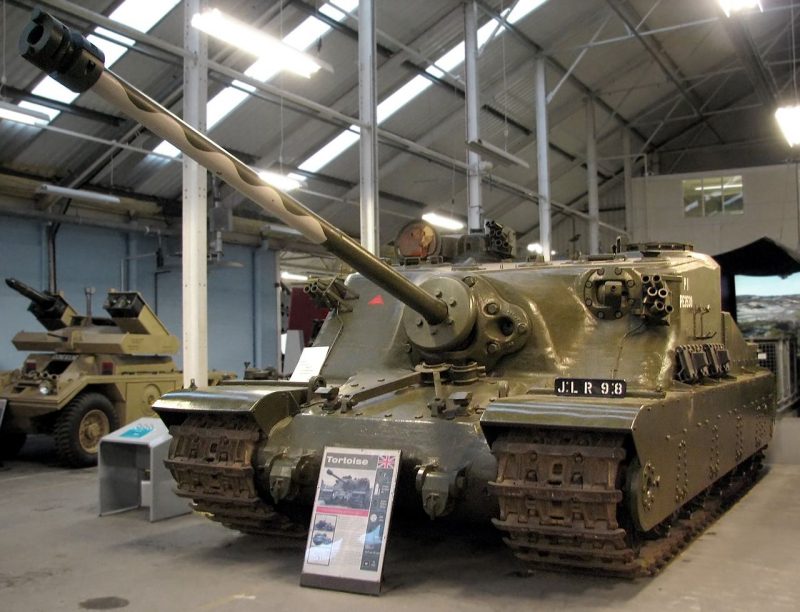During World War I, tank warfare was still very much in its infancy. The priority at the time was about getting this new technology to work more reliably and to develop tactics that would allow them to be used to their full advantage.
Through the inter-war years, with tighter peacetime budgets and a major economic slow down, the desire to build “big” tanks became subdued, but not forgotten.
Mechanized warfare slowly developed throughout the 1920s and 30s with increasingly better armor, weapons and suspension. But there was an urge to build an unrealistic fighting machine, and the Soviet Union took the tank concept to a whole new level with their 50 ton T-35.
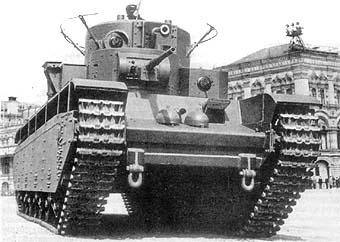
It was an attempt to build something resembling a mechanized fort, bristling with a ridiculous amount of guns. It had 5 turrets with a 76 mm main gun, two 45 mm cannons, and six medium machine guns. Each one carried a crew of 11 men.
Around 60 were built and when World War II broke out, they were used against the invading Germans in 1941. However, these tanks quickly broke down or were destroyed. Though this particular monster tank proved a failure in combat, it did have a certain shock value and was a useful propaganda tool.
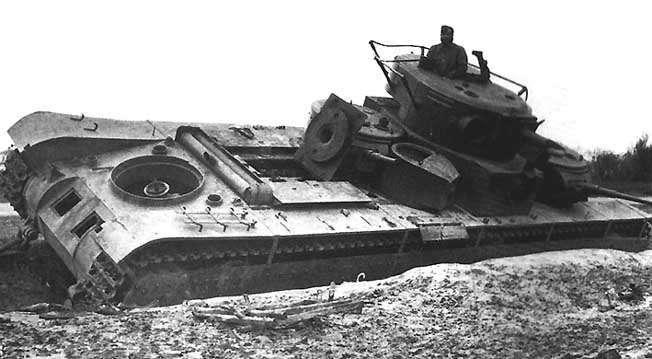
Monster Tanks of WWII
With the advent of World War II, there were many category of tanks that changed and evolved as the war progressed.
Two distinct categories of heavy tanks started to emerge. The first was the alpha male of heavy tanks (50 to 80 ton range). We will define this as any common mechanized vehicle, with a large caliber main gun, that saw proper service in reasonable numbers during WWII. This narrows the heavy tank category to a very exclusive club of just three tanks: the German Tiger I and II and the Soviet KV-2.
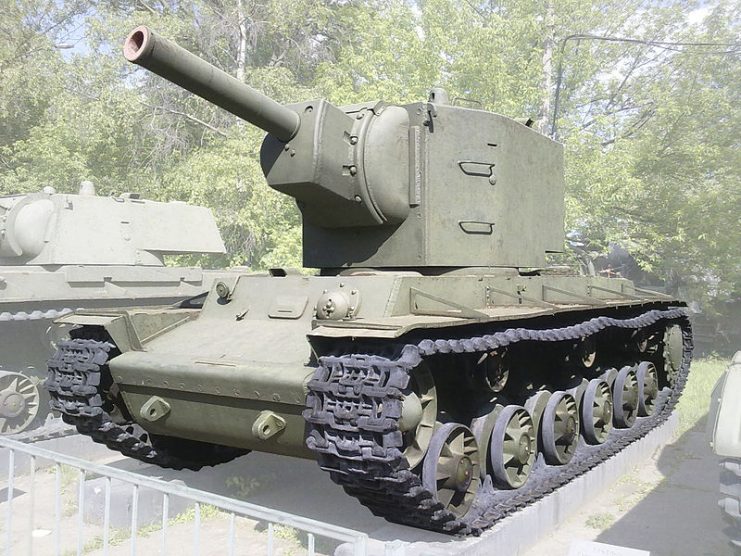
The other category we will consider will be the super heavy tanks, again just confined to three tanks in total: one each from America, Great Britain and Germany. None of these saw active service, but went far beyond the drawing board stage.
It should be noted that for super heavy tanks, this article excludes tanks like the mighty non-turreted Elephant (68 ton) and JagdTiger (72 ton) tank destroyer because they were only built in small numbers. Likewise the multi-turreted 50 ton T-35M has been excluded as only 60 were built and most were destroyed or put out of service shortly after the Soviet Union entered the war.
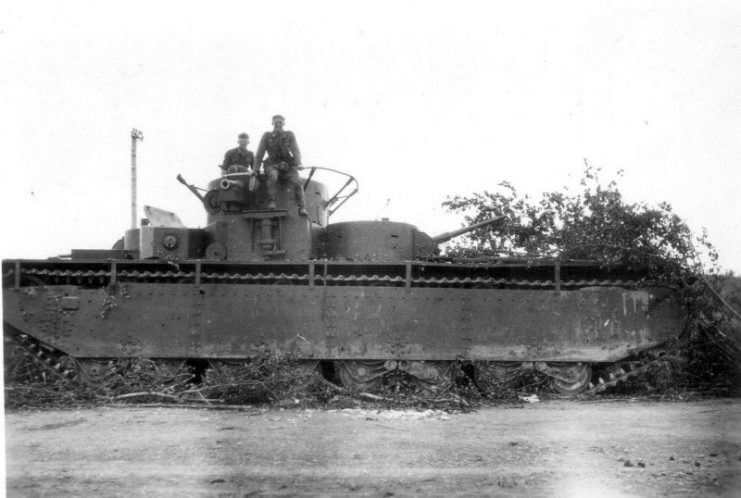
Heavy Tanks
Type: Tiger I (Panzer VI)
- Nationality: Germany
- Introduced: 1942
- Weight: 55 tons
- Crew: 5
- Speed Across Country: 12 mph
- Weaponry:
- 1 x 88 mm Gun
- 2 x Machine Guns
- Maximum Armor: 110 mm
- Height: 10 ft
- Length: 21 ft
When the Tiger I started to enter service with the German army in late 1942, it was not just its size and weight that made it impressive. It sported the legendary 88 mm gun that could defeat any Allied armor at a reasonable range. It was capable of destroying a T34/76 from nearly a mile away.
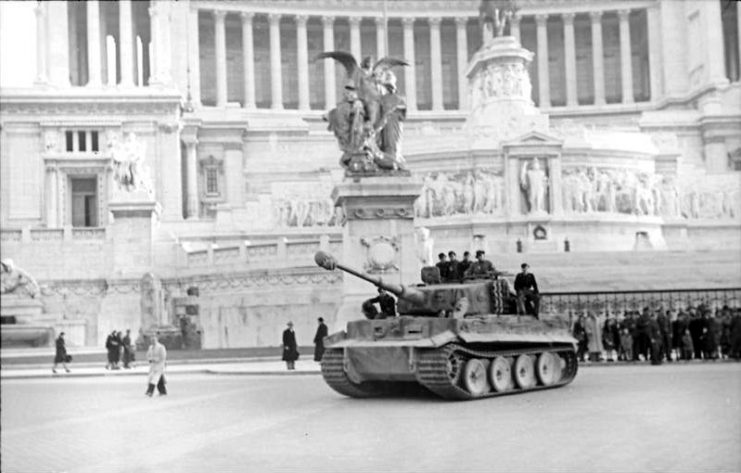
Though the Tiger I’s armor was not sloped, it was incredibly thick. Soviet tanks had to advance to close range to have a chance of penetrating its frontal armor. British and American tanks had to outflank a Tiger and then get in close to have any chance of defeating its armor.
So when a Tiger was spotted on the Western Front, it was so feared that a whole advance could be held up until enough tanks could be brought up to attack it in mass.
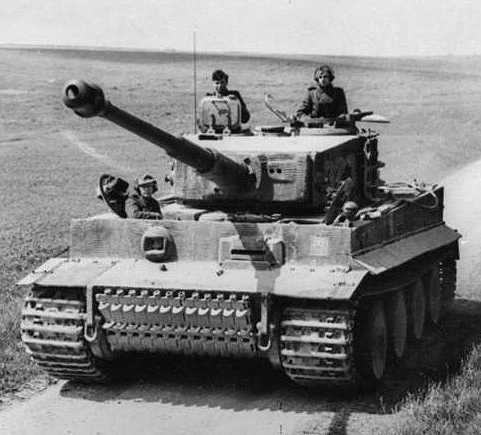
But the Tiger did have its drawbacks. It was mechanically unreliable due to its weight and rushed development. Also, there was never enough of them to go around, with only 1,350 ever produced.
Type: Tiger II (Panzer VIB)
- Nationality: Germany
- Introduced: 1944
- Weight: 70 tons
- Crew: 5
- Speed Across Country: 10 mph
- Weaponry:
- 1 x 88 mm Gun
- 2 x Machine Guns
- Maximum Armor: 185 mm
- Height: 10 ft
- Length: 24 ft
The next logical progression for the Germans was the much improved Tiger II, often referred to as the King Tiger. It had an improved 88 mm gun and even thicker armor, but this time it was sloped. Even the latest Soviet tanks had to treat it with respect.
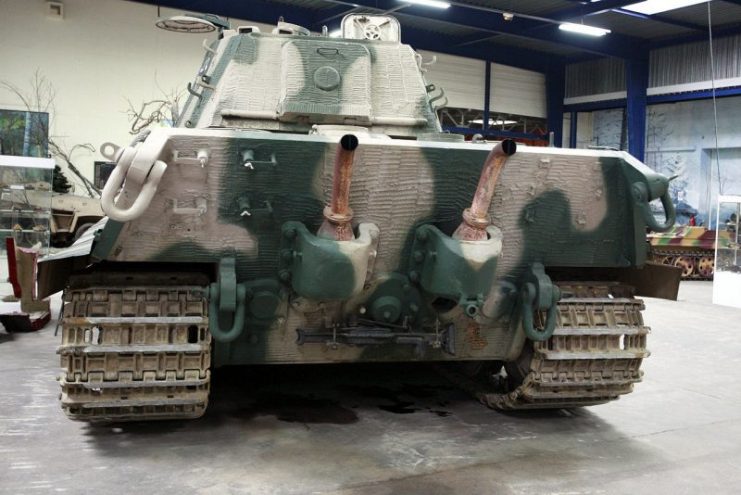
But its gigantic weight (70 tons) put a tremendous strain on its engine, which only produced 10 horse power to the ton. Compare this to the sprightly American M36 tank destroyers that had a ratio of 18 horse power to the ton while being armed with a 90 mm cannon.
Ultimately the Tiger II suffered from the same drawbacks as its predecessor: unreliability and scarcity. Only 485 were built.
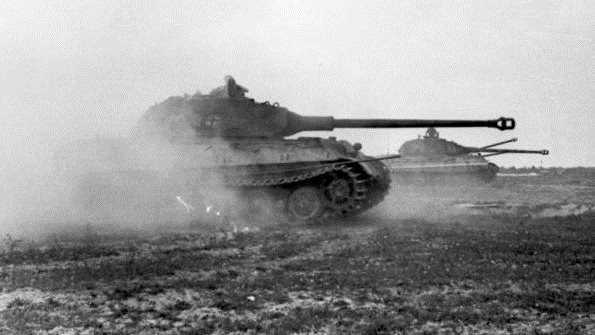
Type: KV-2
- Nationality: USSR
- Introduced: 1941
- Weight: 52 tons
- Crew: 6
- Speed Across Country: 9 mph
- Weaponry:
- 1 x 152 mm Howitzer
- 3 x Machine Guns
- Maximum Armor: 110 mm
- Height: 12 ft
- Length: 23 ft
The last tank in our exclusive 50-plus ton category is the Soviet KV-2, a slow moving, well armored tank with a gigantic tall turret that housed a 152 mm howitzer. Originally it was designed to overcome and defeat enemy fortifications, but it was rapidly pressed into service as a battle tank when Germany invaded the Soviet Union in 1941.
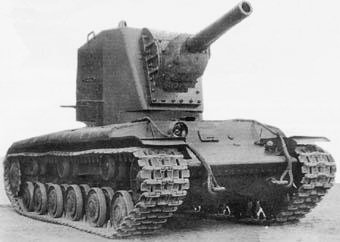
Though the gun had poor penetrative capabilities, the mighty kinetic force of the round could blow off turrets or literally shake apart a tank. But it was clumsy in combat, had a slow rate of fire, and its high silhouette made it a very easy target.
Most were destroyed shortly after the German invasion. When the Germans captured the sole factory where it was built, the Soviets made no attempt to resume production elsewhere due to the inherent shortcomings of the design.
Super Heavy Tanks
Type: Tortoise (A-39)
- Nationality: UK
- Introduced: Prototype 1945
- Weight: 79 tons
- Crew: 6
- Speed Across Country: 4 mph
- Weaponry:
- 1 x 94 mm Gun
- 3 x Machine Guns
- Maximum Armor: 228 mm
- Height: 10 ft
- Length: 33 ft
The Tortoise was the lightest (78 tons) and had the smallest main gun (94 mm) of the three super heavy tanks in this article. But it came the closest of them all to actually being produced, with 6 pre-production tanks being made.
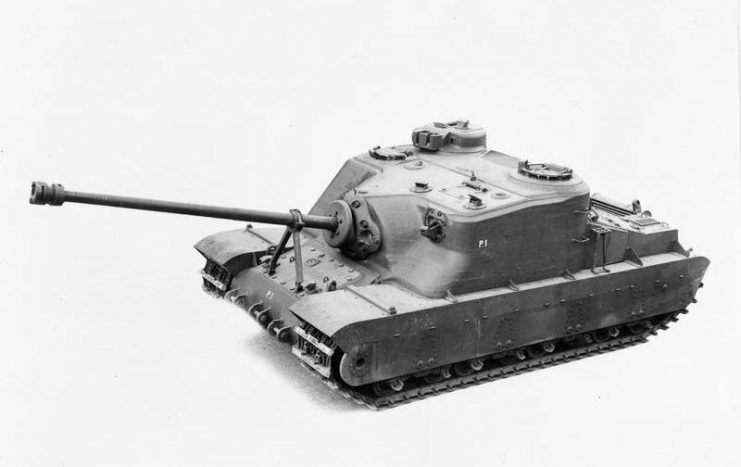
It was designed in 1945 for the same purpose as the American T-28: to help clear German fortifications, such as the Siegfried Line, that the Allies would encounter as they advanced into Germany itself. Therefore the priority was on firepower and armor, with mobility being the least of its designers’ worries.
Its 14.5 kg projectile could have quite a devastating effect on bunkers and emplacements. It could even knock out a German Panther tank from 3,500 feet away.
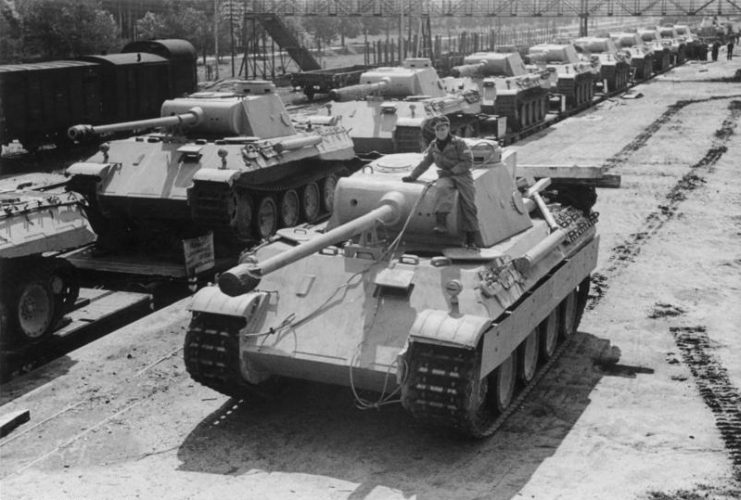
The Tortoise was underpowered, but again, speed was not its priority. It used a Merlin engine which produced 600 horsepower, resulting in only 7 horsepower per ton. This was appalling when you consider a Panther had a power to rate ratio of 15 horsepower per ton. Also, the Tortoise’s range was just 87 miles, and it consumed nearly 1.5 gallons of fuel per mile.
Twenty-five Tortoises were ordered, but only six had been delivered by 1946 before the project was cancelled, as there was no longer was a need for it.
In tests it proved reliable and had good gunnery characteristics. But its weight and size caused great logistical problems.
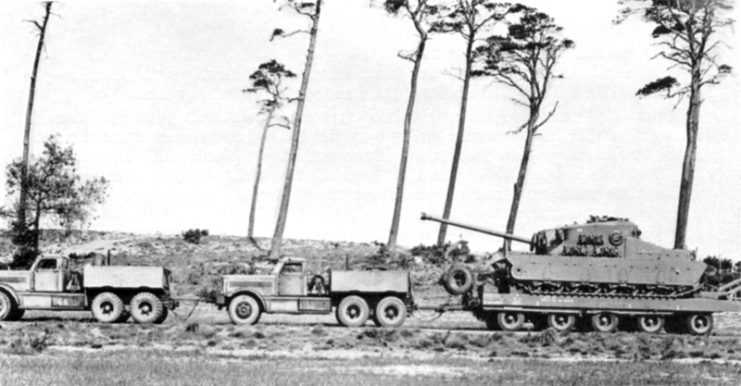
Type: T28
- Nationality: USA
- Introduced: Prototype 1945
- Weight: 86 tons
- Crew: 6
- Speed Across Country: 4 mph (Estimated)
- Weaponry:
- 1 x 105 mm
- 1 x Machine Gun
- Maximum Armor: 305 mm
- Height: 9 ft
- Length: 36 ft
As for the American T28, it was slightly heavier and had a bigger gun. But it had significantly thicker armor, up to 80 mm thicker at the front. It was later to be reclassified as the Super Heavy Tank T28. Like the Tortoise, it had no turret and had to aim its gun by moving the whole body of the tank.
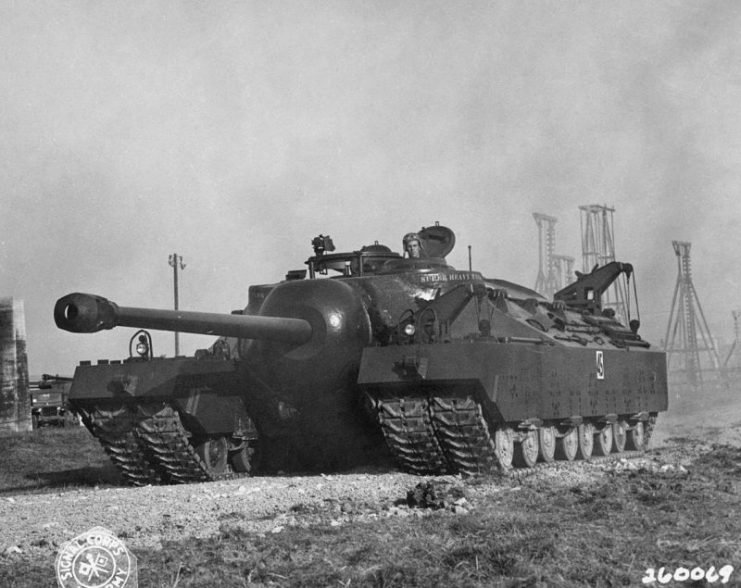
The T28 had a protracted design phase which ran from March 1944 to March 1945. Work did not start on producing the actual tank until August 1945. As the war in Europe had ended and the war in the Pacific would very soon end, the original order for twenty-five tanks was reduced to five, and then again to just two tanks.
The T28 was put through tests and trials until October 1947 when the project was deemed obsolete and cancelled. Apart from having the same logistical problems as the Tortoise, the T28 proved very expensive to maintain.
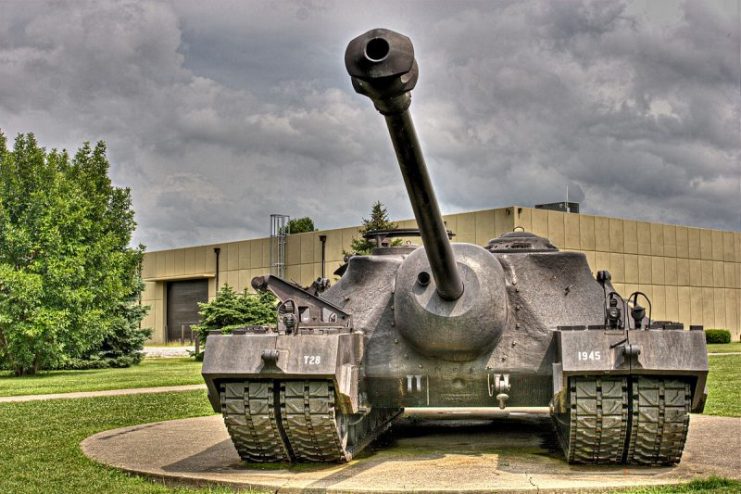
Type: Maus (Panzer VIII)
- Nationality: Germany
- Introduced: Prototype 1944
- Weight: 188 tons
- Crew: 6
- Speed Across Country: 3 mph (Estimated)
- Weaponry:
- 1 x 128 mm Gun
- 1 x 75 mm Gun
- 1 x Machine Gun
- Maximum Armor: 240 mm
- Height: 12 ft
- Length: 33 ft
The German Panzer VIII “Maus” was by far the heaviest (188 tons) and best armed (128 mm main gun with a coaxial 75 mm gun) of the three super heavy tanks. It is by far the heaviest tank ever built. Despite its enormous size it had an extremely cramped interior.
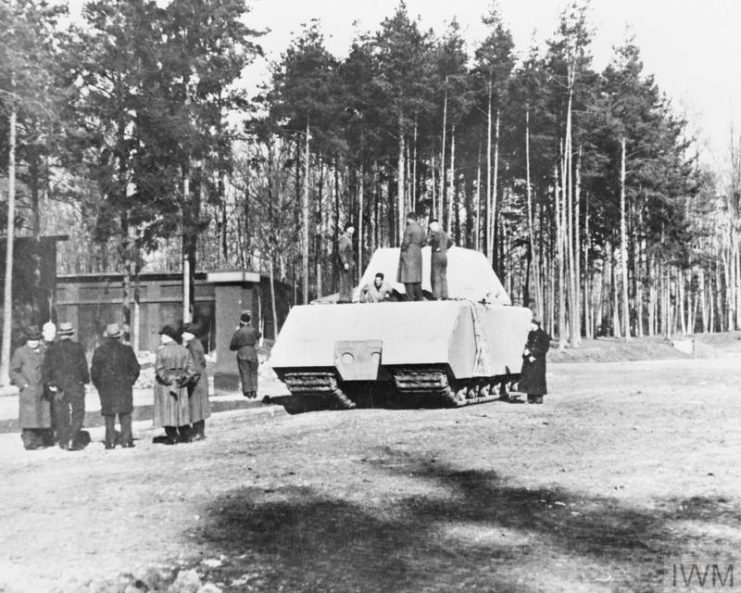
Only two were ever built, one of which was incomplete. It was designed as a “breakthrough” tank at a time when Germany was fighting a defensive war.
On the plus side the armor was incredibly thick, ranging from 240 mm on the front to 180 mm on the sides and rear. An unusual characteristic compared to other tanks was that its roof armor was also amazingly thick—an incredible 220 mm—in response to the devastating attacks on tanks by Allied ground attack aircraft such as the British Hawker Typhoon and the Soviet II-2 Sturmovik.
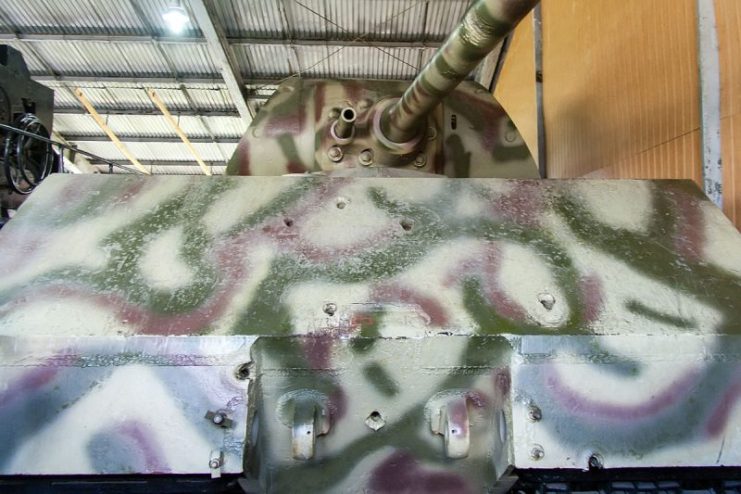
The Maus’s main armament was the 128 mm KwK 44 L/55 which fired a massive 28 kg projectile that could penetrate 148 mm of sloped armor at 6,600 feet (1.25 miles). This meant it could easily defeat the frontal armor of a Soviet JS-2, American M-26 Pershing, British A-34 Comet, or even the Germans’ own Tiger I.
A “King Tiger” (Tiger II) with its maximum armor of 185 mm could withstand a hit down to 3,000 feet. But that still meant it could be destroyed by a Maus from half a mile away.
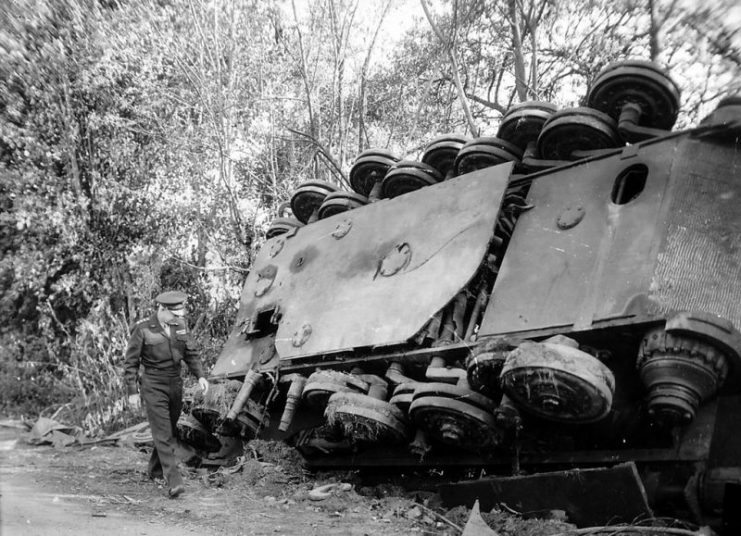
But all this came at a cost. The Maus had a slow rate of fire. Its prohibitive size and enormous weight restricted its off-road ability. On roads it often churned up the surface as it went along, making the road unserviceable for other vehicles.
Most railways, tunnels and bridges in the country could not take its weight. On those few that could take the weight, the tank’s giant bulk restricted it.
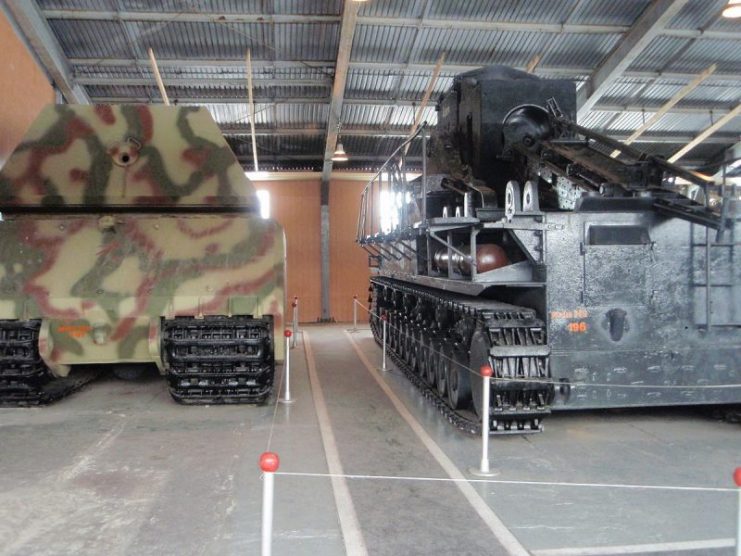
Its monster weight pushed engine and suspension technology and innovation to its limit. In fact it was a step too far. The tank was notoriously unreliable and it was unlikely that any of its problems could have been fully resolved, even given more development time.
Read another story from us: “Russian Colossus” – The Soviet KV Heavy Tanks
After the war it was realized that the super heavy tank concept was simply unrealistic because of all the drawbacks related to its size and weight. As for the heavy tanks, they were deemed unable to keep up with the fast pace of modern warfare.
In 1957 the Fourth Tripartite Conference on Armour recommended that all medium and heavy tanks be replaced with a single new class, the Main Battle Tank (MBT). This led to the German Leopard II, American M1 Abrams, British Challenger II, and Russian T-80 MBTs of today.
